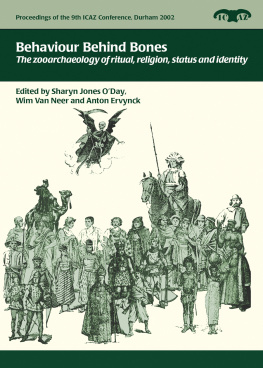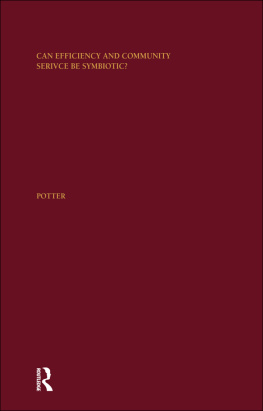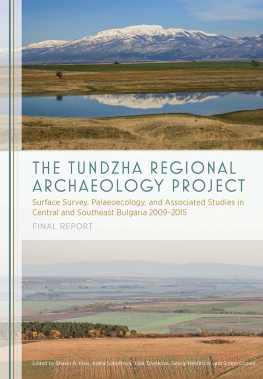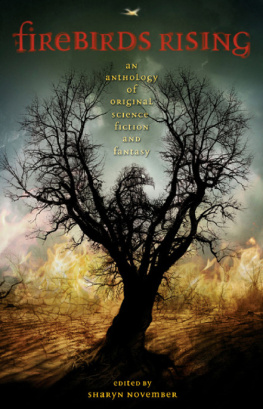Sharyn Jones O’Day - Behaviour Behind Bones
Here you can read online Sharyn Jones O’Day - Behaviour Behind Bones full text of the book (entire story) in english for free. Download pdf and epub, get meaning, cover and reviews about this ebook. year: 2017, publisher: Casemate Publishers & Book Distributors, LLC, genre: Religion. Description of the work, (preface) as well as reviews are available. Best literature library LitArk.com created for fans of good reading and offers a wide selection of genres:
Romance novel
Science fiction
Adventure
Detective
Science
History
Home and family
Prose
Art
Politics
Computer
Non-fiction
Religion
Business
Children
Humor
Choose a favorite category and find really read worthwhile books. Enjoy immersion in the world of imagination, feel the emotions of the characters or learn something new for yourself, make an fascinating discovery.
- Book:Behaviour Behind Bones
- Author:
- Publisher:Casemate Publishers & Book Distributors, LLC
- Genre:
- Year:2017
- Rating:4 / 5
- Favourites:Add to favourites
- Your mark:
- 80
- 1
- 2
- 3
- 4
- 5
Behaviour Behind Bones: summary, description and annotation
We offer to read an annotation, description, summary or preface (depends on what the author of the book "Behaviour Behind Bones" wrote himself). If you haven't found the necessary information about the book — write in the comments, we will try to find it.
Behaviour Behind Bones — read online for free the complete book (whole text) full work
Below is the text of the book, divided by pages. System saving the place of the last page read, allows you to conveniently read the book "Behaviour Behind Bones" online for free, without having to search again every time where you left off. Put a bookmark, and you can go to the page where you finished reading at any time.
Font size:
Interval:
Bookmark:


Behaviour Behind Bones
The zooarchaeology of ritual, religion, status and identity
Proceedings of the 9th Conference of the International Council of Archaeozoology, Durham, August 2002
Series Editors: Peter Rowley-Conwy, Umberto Albarella and Keith Dobney
The zooarchaeology of ritual, religion, status and identity
Edited by
Sharyn Jones ODay, Wim Van Neer and Anton Ervynck
Oxbow Books
First published in the United Kingdom in 2004. Reprinted in 201 by
OXBOW BOOKS
The Old Music Hall, 106108 Cowley Road, Oxford OX4 1JE
and in the United States by
OXBOW BOOKS
1950 Lawrence Road, Havertown, PA 19083
Oxbow Books and the individual authors 2004
Paperback Edition: ISBN 978-1-78570-571-7
Digital Edition: ISBN 978-1-78297-911-1
Mobi Edition: ISBN 978-1-78297-912-8
A CIP record for this book is available from the British Library
All rights reserved. No part of this book may be reproduced or transmitted in any form or by any means, electronic or mechanical including photocopying, recording or by any information storage and retrieval system, without permission from the publisher in writing.
For a complete list of Oxbow titles, please contact:
UNITED KINGDOM
Oxbow Books
Telephone (01865) 241249, Fax (01865) 794449
Email:
www.oxbowbooks.com
UNITED STATES OF AMERICA
Oxbow Books
Telephone (800) 791-9354, Fax (610) 853-9146
Email:
www.casemateacademic.com/oxbow
Oxbow Books is part of the Casemate Group
This book is one of several volumes which form the published proceedings of the 9th meeting of the International Council of Archaeozoology (ICAZ), which was held in Durham (UK) 23rd28th August 2002. ICAZ was founded in the early 70s and has ever since acted as the main international organisation for the study of animal remains from archaeological sites. The main international conferences are held every four years, and the Durham meeting the largest ever follows those in Hungary, the Netherlands, Poland, England (London), France, USA, Germany and Canada. The next meeting will be held in Mexico in 2006. The Durham conference which was attended by about 500 delegates from 46 countries was organised in 23 thematic sessions, which attracted, in addition to zooarchaeologists, scholars from related disciplines such as palaeoanthropology, archaeobotany, bone chemistry, genetics, mainstream archaeology etc.
The publication structure reflects that of the conference, each volume dealing with a different topic, be it methodological, ecological, palaeoeconomic, sociological, historical or anthropological (or a combination of these). This organisation by theme rather than by chronology or region, was chosen for two main reasons. The first is that we wanted to take the opportunity presented by such a large gathering of researchers from across the world to encourage international communication, and we thought that this could more easily be achieved through themes with world-wide relevance. The second is that we thought that, by tackling broad questions, zooarchaeologists would be more inclined to take a holistic approach and integrate their information with other sources of evidence. This also had the potential of attracting other specialists who shared an interest in that particular topic. We believe that our choice turned out to be correct for the conference, and helped substantially towards its success. For the publication there is the added benefit of having a series of volumes that will be of interest far beyond the restricted circle of specialists on faunal remains. Readers from many different backgrounds, ranging from history to zoology, will certainly be interested in many of the fourteen volumes that will be published.
Due to the large number of sessions it would have been impractical to publish each as a separate volume, so some that had a common theme have been combined. Far from losing their main thematic focus, these volumes have the potential to attract a particularly wide and diverse readership. Because of these combinations (and because two other sessions will be published outside this series) it was therefore possible to reduce the original 24 sessions to 14 volumes. Publication of such a series is a remarkable undertaking, and we are very grateful to David Brown and Oxbow Books for agreeing to produce the volumes.
We would also like to take this opportunity to thank the University of Durham and the ICAZ Executive Committee for their support during the preparation of the conference, and all session organisers now book editors for all their hard work. Some of the conference administrative costs were covered by a generous grant provided by the British Academy. Further financial help came from the following sources: English Heritage, Rijksdienst voor het Oudheidkundig Bodemonderzoek (ROB), County Durham Development Office, University College Durham, Palaeoecology Research Services, Northern Archaeological Associates, Archaeological Services University of Durham (ASUD), and NYS Corporate Travel. Finally we are extremely grateful for the continued support of the Wellcome Trust and Arts and Humanities Research Board (AHRB) who, through their provision of Research Fellowships for Keith Dobney and Umberto Albarella, enabled us to undertake such a challenge.
Two of the 24 sessions organised included the themes of Ritual and Religion and Status and Identity. Since these broad study areas (as aspects of human behaviour that clearly go beyond sheer economic and ecological frameworks) cover much common ground, it was obvious that these sessions should be conjoined for the purposes of publication.
Behaviour behind bones
Amongst those who study animal bones from archaeological sites, there exists a smouldering debate regarding whether this scientific discipline should be called archaeozoology or zooarchaeology. The first name suggests zoological research based on material derived from archaeological sites and indicates a close link with fields such as palaeontology, natural history, ecology or even veterinary medicine. In the Old World, the study of animal bones from archaeological sites indeed grew as archaeozoology and focused upon the quaternary evolution of the animal realm, the history of domestic animals, the economy of former human settlements and the ecology of the landscape around it. In the New World, however, juggling with bones has been called zooarchaeology, the study of past human life through the animal remains found at their sites. Through a close link with anthropology and sociology, the emphasis is on the reconstruction and understanding of human behaviour. Of course, both the archaeozoological and zooarchaeological viewpoints are equally valuable, but the dichotomy may yield the unfortunate effect of dividing schools of researchers and inhibiting communication between each other.
Over the last decades in the Old World, more and more published animal bone reports deal with sites from historical periods ( e.g ., from Roman, medieval or postmedieval times). In this temporal frame, the evolution of the animal world or domestication history are no longer the main research themes, being replaced by more compelling issues such as urbanisation, colonialism, industrialisation, social uprise. Through the development towards the analysis of historical contexts, it also became clear that economy and ecology alone were not sufficient to explain what had happened at these sites. Historians had, long ago, already provided the data and insights to indicate that peoples behaviour in the past was not only directed by economic and ecological constraints but was equally influenced by social mechanisms, including religion and ideology in general. Taking this historical approach back to pre-historical periods, Old World archaeozoologists are now increasingly coming into the influence spheres of anthropology, the four field discipline of most New World archaeologists. On the other hand, New World zooarchaeologists, even those working within the field of the New World Historical Archaeology, have a growing interest in the synergy between the rich corpus of written sources and the animal remains studies in the Old World. In this way, anthropology, history, zooarchaeology and archaeozoology are now coming together.
Next pageFont size:
Interval:
Bookmark:
Similar books «Behaviour Behind Bones»
Look at similar books to Behaviour Behind Bones. We have selected literature similar in name and meaning in the hope of providing readers with more options to find new, interesting, not yet read works.
Discussion, reviews of the book Behaviour Behind Bones and just readers' own opinions. Leave your comments, write what you think about the work, its meaning or the main characters. Specify what exactly you liked and what you didn't like, and why you think so.





